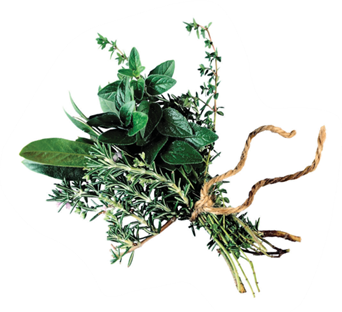
Michigan Fresh: Using, Storing, and Preserving Herbs (E3179)
DOWNLOADAugust 29, 2023 - Beth A. Clawson and Kara Lynch, Michigan State University Extension
This Document is offered in: English, Arabic, Espanol
Selection 
Fresh-cut herbs should be free from soil and cooled or refrigerated. Potted herbs should look healthy. Look for firm leaves that aren’t wilted, have no black spots and are free of insects. They should still have a strong aroma.
How Much to Buy
Typically, herbs are sold in bunches, so estimating how much your family will use right away is important. One bunch for using right away usually will suffice. If you plan to dry or preserve herbs, then you may wish to purchase several bunches.
Storage
Herbs have a very short shelf life. Most should be refrigerated and can last about a week. Some herbs, such as garlic, can be stored on the counter or in a cupboard. If dried, extracted or frozen, herbs can be stored for up to a year. Store all herbs in oil infusions in the refrigerator. Potted plants should be cared for and set in an appropriate place as required by the plants’ growing needs.
How to Serve
- Wash hands before and after handling fresh produce.
- Always wash fresh produce under cool running water before using. Do not use soap.
- Eat fresh in salads.
- Add to your favorite recipes.
- Make flavored vinegar.
- Mix with oil for a bread dip, discarding any unused portions.
Preserving
Drying is a traditional way of preserving herbs, but herbs can also be frozen, or the flavor can be extracted in an oil or vinegar.
Drying
Make sure the herbs are clean and the ends trimmed. To dry them, tie them into bundles and hang the bundles upside-down to air dry, or put them in paper bags or dry them in a food dryer.
They can be woven into an herb wreath and hung in the kitchen to be used as needed. Some herbs do well when they are quick dried in a microwave and then stored in a freezer. Oven drying is also a good technique for drying herbs.
Freezing
Many herbs can be frozen without problems and retain their freshness when thawed. Always wash and trim before freezing. Some of the hardier herbs — such as sage, rosemary and thyme — can be frozen right on the stalk. Just tear off what you need. Others should be steamed or blanched in boiling water for a minute or two, then cooled quickly in ice water and drained thoroughly. Put them in packages, label and freeze.
Tender herbs such as basil, parsley and chives can be minced or pureed with a small amount of water in a blender, then poured into freezer bags or into ice cube trays. Transfer frozen cubes to freezer storage bags or containers. Add these flavor cubes to your favorite soup or sauce.
Garlic-in-Oil 
Research performed by the National Center for Home Food Preservation confirmed that mixtures of garlic in oil stored at room temperature are at risk for the development of botulism.
Garlic-in-oil should be made fresh and stored in the refrigerator at 40 °F or lower for no more than 4 days. It may be frozen for long term storage for up to several months. Package in glass freezer jars or plastic freezer boxes, leaving ½-inch headspace. Seal, label, date and freeze. (National Center for Home Food Preservation, 2015)
Fresh Herb Tips
Fresh herbs smell stronger than dried herbs but do not taste as strong. Use more fresh herbs in recipes that call for dried herbs — typically three times more (for example, 1 teaspoon dried translates into 3 teaspoons fresh).
References
- Andress, E., & Harrison, J. A. (2014). So easy to preserve (Bulletin 989). (6th ed.). University of Georgia Cooperative Extension.
- National Center for Home Food Preservation. http://nchfp.uga.edu/
- National Center for Home Food Preservation. (2015) Freezing: Garlic-in-oil. https://nchfp.uga.edu/how/freeze/garlic_oil.html
- Nummer, B. A., Schaffner, D. W., Fraser, A. M., & Andress, L. (2011). Current food safety issues of home-prepared vegetables and herbs in oil. Food Protection Trends, 36(6), 336-342. https://www.foodprotection.org/files/food-protection-trends/Jun-11-Nummer.pdf
More information



 Print
Print Email
Email






